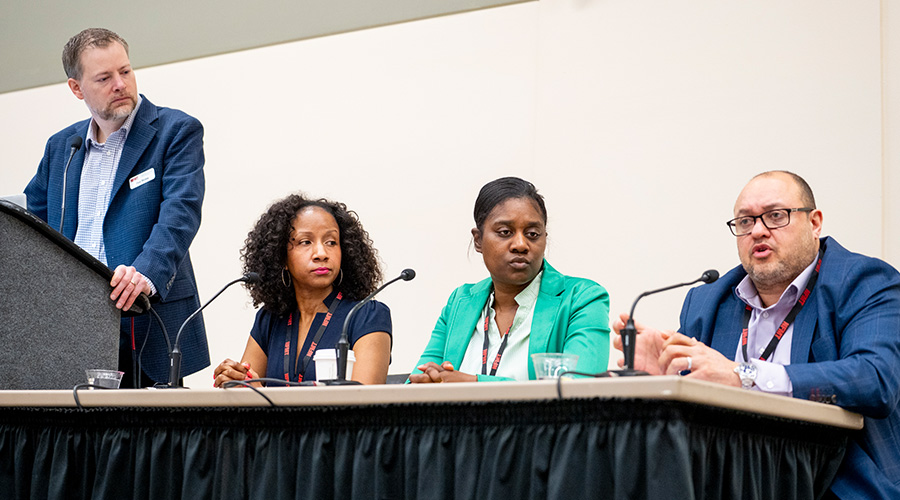This K-12 schools panel features Dr. Alicia Hart of Alexandria City Public Schools (VA), Dr. Lynette Washington of Baltimore City Public Schools (MD), and Jeffrey Cardwell of Norristown Area School District (PA), each offering unique perspectives based on their district’s size, funding structure, and facility needs.
All three leaders emphasized the importance of long-range capital planning. However, with aging infrastructure and growing student populations, planning alone isn’t enough — it must be paired with proactive funding advocacy and community engagement.
Dr. Hart shared how Alexandria uses a tri-annual Facility Condition Index (FCI) process and enrollment forecasting to drive CIP decisions. The district also allocates emergency CIP funding to manage unexpected failures, such as HVAC system breakdowns. She noted that maintaining flexibility is key when working with shifting local and federal funding landscapes.
Baltimore’s experience highlighted the power of legislative advocacy. Dr. Washington discussed the city’s landmark $1.3 billion capital investment, which enabled the construction or renovation of 28 schools. The district is now using a second round of state bond funding to address high school modernization. With limited local contributions, Baltimore phases system upgrades over several years and relies on tools like Asset Essentials for capital forecasting and prioritization.
In contrast, Norristown is at the start of its modernization journey. Cardwell described the district’s shift from reactive maintenance to a $300 million, 10- to 15-year capital plan. Priorities include life safety, ADA compliance, and capacity challenges. The district is employing cost-effective prefabricated additions and pursuing energy savings performance contracts to stretch limited funding.
The panelists also stressed the importance of community trust and transparency. Whether it’s managing indoor air quality, conducting rezoning, or selecting swing space for construction, open communication with stakeholders builds credibility and support. For example, school facility departments can publish testing results and involve maintenance teams in assessment processes, as well as present facility problems and solutions to school boards and the public.
Log in or join fnPrime to watch the video and earn continuing education credits.





